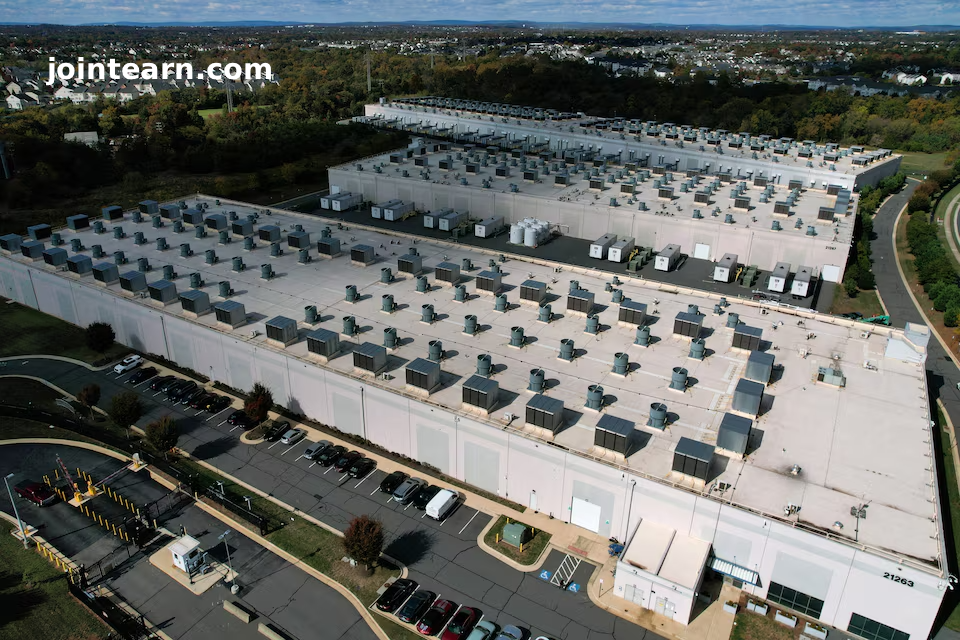
The surge in artificial intelligence (AI) has pushed global stock markets to new heights. Yet, behind the excitement, the race to build massive data centres—critical to powering this AI revolution—is increasingly being funded through intricate layers of debt. Investors and regulators alike are beginning to question whether a new financial bubble may be forming.
While today’s AI enthusiasm differs from past manias like the late-1990s dotcom boom—thanks to more profitable, well-capitalised companies and stronger business models—some experts, including the Bank of England, are warning that hidden financial risks could be accumulating in complex, less transparent corners of the market.
Here are five key trends showing how debt is fueling AI’s data centre expansion:
1. A Surge in Investment-Grade Borrowing
According to Bank of America data, AI-focused tech giants issued an unprecedented $75 billion in investment-grade U.S. debt during September and October alone—more than double their annual average of $32 billion between 2015 and 2024.
This wave includes $30 billion from Meta and $18 billion from Oracle, alongside new borrowing by Alphabet and a $38 billion high-grade loan tied to Oracle’s Vantage data centres.
While this two-month borrowing spree represents just 5% of the $1.5 trillion U.S. investment-grade debt market in 2025, Barclays analysts note that AI-related issuances will likely shape the credit supply landscape for 2026.
Debt structures are also becoming more sophisticated. Meta, for example, secured $27 billion in financing through Blue Owl Capital for a major data centre project using an off-balance-sheet arrangement. JPMorgan estimates AI-linked firms now make up 14% of its investment-grade index, overtaking U.S. banks as the largest sector component.
2. Oracle’s Success Comes with Rising Credit Risk
Oracle’s stock has climbed 54% in 2025, marking its strongest rally since 1999 and propelling it into the top tier of Wall Street’s most valuable companies. However, the cost of insuring its debt—measured by credit default swaps (CDS)—has also surged, reflecting investor unease about Oracle’s growing debt load despite its AI-fueled growth.
3. AI-Linked Junk Bonds Gain Ground
The appetite for risk is also spilling into the high-yield (“junk”) bond market, where companies with weaker credit ratings borrow at higher interest rates.
In recent months, TeraWulf—a former bitcoin miner turned data centre operator—issued $3.2 billion in BB-rated bonds, while CoreWeave, an AI cloud provider backed by Nvidia, raised $2 billion in similar high-yield debt.
The volume of tech-related junk bonds has surged to levels last seen during the 2021 market peak.
4. Private Credit Takes a Bigger Role
Private credit—loans made by investment funds rather than traditional banks—is becoming a key funding source for AI infrastructure. UBS reports that private credit loans tied to AI nearly doubled in the year through early 2025.
These loans are flexible but can be difficult to trade during downturns, which may amplify market stress in times of instability. Morgan Stanley projects that private credit could finance over half of the $1.5 trillion required for global data centre construction through 2028, representing an $800 billion opportunity for private lenders.
5. A New Era for Asset-Backed Securities (ABS)
Securitised debt—specifically asset-backed securities (ABS)—is also expanding into AI financing. These instruments package assets like loans or leases into tradable securities. In the AI space, they might be backed by rent payments from Big Tech tenants leasing data centre space.
Though digital infrastructure represents just 5% (about $80 billion) of the $1.6 trillion U.S. ABS market, Bank of America notes that this segment has grown more than eightfold in five years. Data centres now account for 64% of this submarket, which could reach $115 billion by 2026.
However, memories of the 2008 financial crisis still linger, when opaque and overly complex securitised products contributed to a global market meltdown—prompting some to approach the current boom with caution.

Leave a Reply